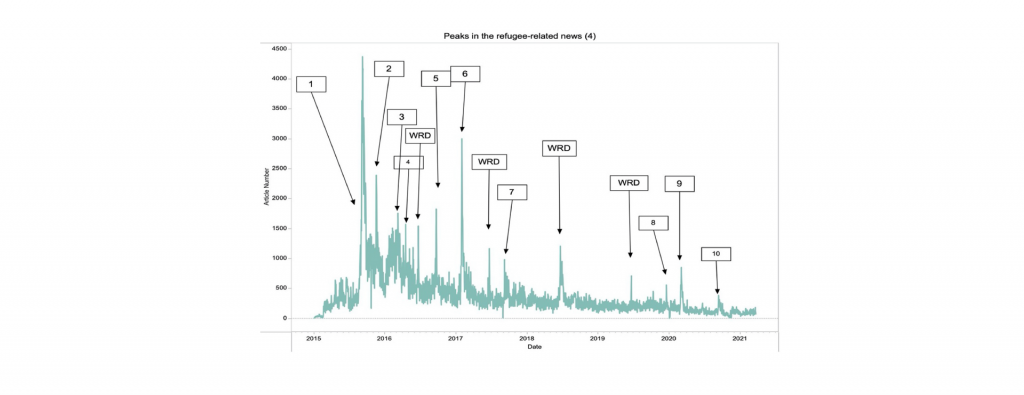This fascinating paper by researchers at the Virginia Modeling, Analysis, and Simulation Center explores media coverage of refugees:
The number of refugees and other displaced persons is at an all-time high globally. News coverage of displacement often evokes negative and even dehumanizing portrayals of the situations, politics, and economics of refugees and their host communities. In this study, we use GDELT to collect a large representation of global news across languages and countries to understand the volume, tone, and topics of news media coverage of refugees. Looking at specific events that trigger peaks in news coverage, we find that while the tone of news is always negative, this negativity reflects both empathy and sorrow for refugees as well as anti-migrant sentiment. World Refugee Day is a significant annual event that drives up news coverage at the international level, even though this also causes an increase in negative tone of the articles, reflecting the empathetic aspects of negative tone. At the international level, talking rather than action codes dominate the news. We suggest this as an area of future work, but it points to the large role that international diplomacy and international appeals for aid play in the humanitarian response of refugee situations.
